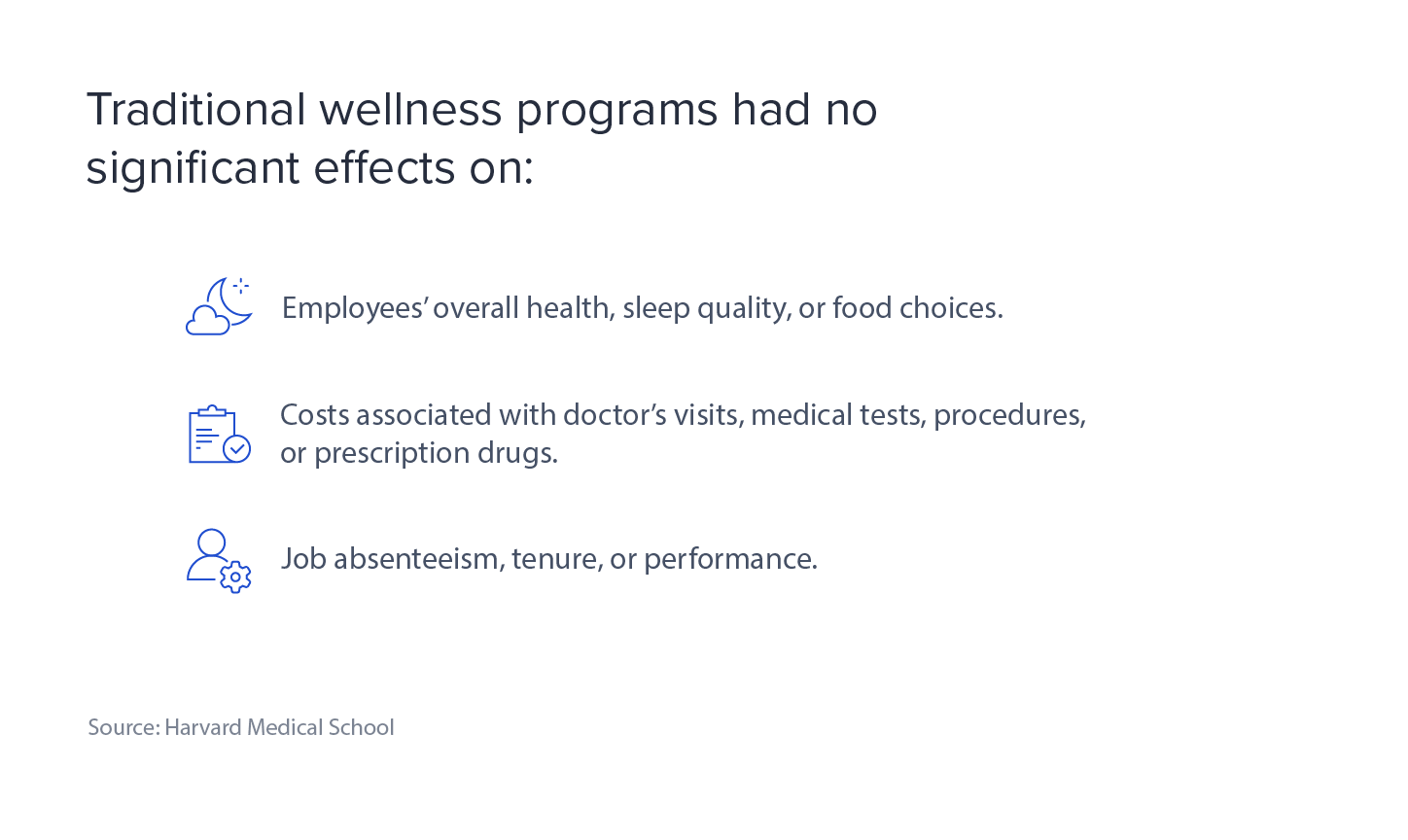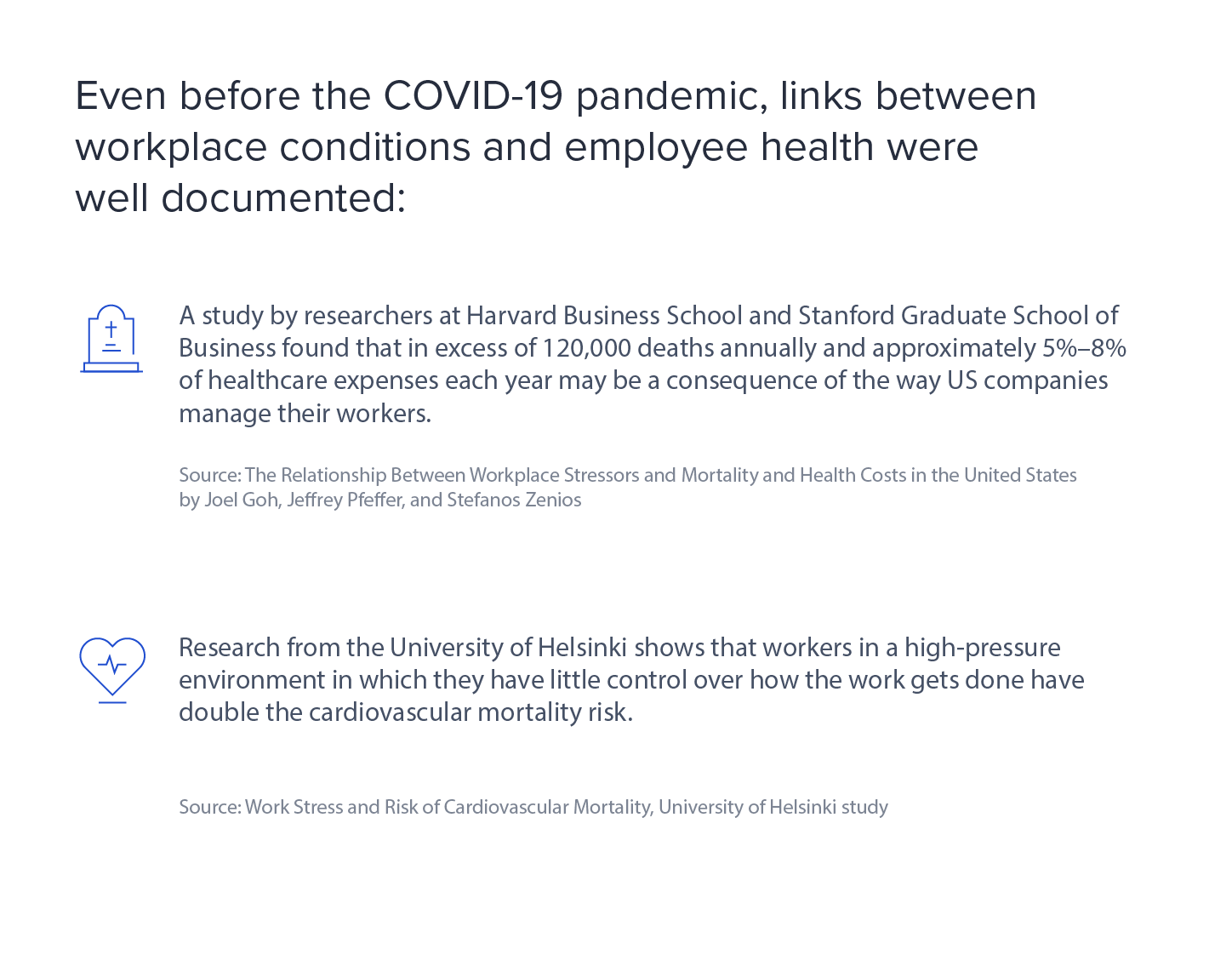Happier, Healthier, Hybrid: The Best Hybrid Work Schedules That Promote Employee Well-being
authors are vetted experts in their fields and write on topics in which they are extremely knowledgeable. All of our content is peer reviewed and validated by world-class professionals.

Many executives think their companies are fostering employee health and wellbeing simply because they offer wellness programs. But research suggests that these programs aren’t very effective in improving employees’ health. In emphasizing wellness programs, business leaders are overlooking a more powerful tool to improve their employees’ health: their organizations’ own practices and policies, along with the advantages of a hybrid work schedule.
Wellbeing initiatives, which typically focus on changing individual employee behavior through exercise or weight loss, are increasingly common. According to the Kaiser Family Foundation, “84% of large employers (200 or more workers) offering health benefits offered a workplace wellness program, such as those to help people lose weight, stop smoking, or provide lifestyle and behavioral coaching.”

Creating a Happier, Healthier Hybrid Workplace
After examining many research studies on work and health, my colleagues at the Harvard T.H. Chan School of Public Health and I have reached the conclusion that there is another path: Companies can redesign work to make it healthier for employees and, in the process, help decrease employee turnover.
The result of our research is an online Work Design for Health toolkit for companies ready to redesign work for well-being. Here are a few highlights:
Give Employees More Control with a Hybrid Schedule
Well before the COVID-19 pandemic, I conducted a study with a number of colleagues on what we now call hybrid work. In our study, which took place at the IT division of a Fortune 500 company, some teams of employees were given substantial control over when and where they worked with the expectation that they would coordinate their work and communications. The employees who took part in this experiment ended up, on average, coming into the office for a little over half of their work hours—not all that different from the hybrid and remote work schedule that many companies were trying out in the wake of COVID-19.
Our research found that these flexible ways of working had positive health benefits, such as better sleep, improved mental health, and lower levels of burnout for the participating employees, compared to their colleagues who worked in the same company but followed more traditional rules. The work redesign experiment also yielded bottom-line benefits for the company by reducing the costs associated with employee turnover, since the quit rate was 33% lower for employees in the experimental group. (There was no significant effect on productivity, either negative or positive, in our quantitative analysis using company metrics, but participating employees regularly told us in our interviews that they felt more focused and productive.)

HubSpot’s Approach to the Hybrid Work Schedule
As companies experiment with hybrid work, they have an opportunity to unlock similar well-being benefits for their workforces. While some companies are simply announcing a new hybrid work option, others are making more significant shifts in workplace policies and culture.
One example is HubSpot, a customer relationship management platform based in Cambridge, Massachusetts which earned the No. 2 spot on Glassdoor’s 100 Best Places to Work in 2022. In 2020, HubSpot initiated new policies for hybrid and remote work that allow employees to choose from three options: @home (primarily remote work), @office (in the office three or more days a week), and @flex (in the office for two or fewer days a week). Employees are asked to commit to their choice for one calendar year, unless there is a change in their life circumstances.
In an interview via email, Katie Burke, Chief People Officer at HubSpot, told me the company decided to make the process of choosing work preferences similar to that of selecting and enrolling in benefit plans once a year. The aim, she said, was “to reduce friction and increase clarity for employees and candidates.”
“We know from experience that oftentimes people are made promises about remote work that then get fuzzy when they join a new team or manager,” Burke explained. “Doing it this way made sure we really committed 100% as a company to this approach and that there were no surprises for candidates. As an example, if you work on our front desk team, your role will be listed as @office, so there is no confusion that we need your help in the office regularly greeting folks. But for everyone else, it means that you don’t have to negotiate as part of your offer process (internally or externally) on the flexibility of location you get in your role.”
HubSpot regularly surveys its employees and, Burke noted, those surveys indicate “overarching support” for the way the new hybrid work policies increase the company’s access to talent and support employees who have a desire for remote and hybrid work schedules. She added that the company will work in the year ahead to incorporate employee feedback “to better codify what the office experience will look like long term and also to ensure we foster meaningful connections across teams and locations.”
How to Improve Workplace Collaboration
Of course, not all jobs can be done off-site. And even for those that can, a recent study published in Nature Human Behaviour suggests that 100% remote work can lead to less collaboration with colleagues across teams or work units. Therefore, companies that adopt flexible ways of working need to give special thought to fostering collaboration across teams and departments, which often sparks innovation.
There are many ways to do this. For example, employees might be paired with buddies from other departments in order to learn more about those functions and build broader networks. But, for that tactic to be effective, organizations and managers need to support employees taking the time to prioritize those connections, even when staff are busy. Ultranauts, a technology company whose employees work remotely, has a suite of strategies to help remote and hybrid employees connect with one another, including an open Slack channel specifically for chatting with colleagues and organized virtual social events such as contests. In addition to increasing innovation, research indicates that enhancing social relationships at work promotes employee well-being.
Another impactful step companies can take to improve the health of their remote or hybrid workforce is to avoid overworking their employees. For example, in the Fortune 500 company we studied, part of the work redesign initiative involved training teams to identify low-value work—such as a standing meeting that a particular individual didn’t really need to attend—and reducing such work or suggesting process improvements. In the training, managers and their teams were also encouraged to rethink their communication norms so that team members could block off concentrated work time in which they would not be expected to respond instantly to chat messages and emails from colleagues.
The employees in the experiment had options to work remotely and to adjust their hybrid or remote work schedules, which also helped to moderate excessive work demands, since those options reduced employees’ commute times and made it easier to deal with personal tasks during the day. Supervisors also received training in how to be more supportive of employees’ personal and family lives—training that research has found yields significant health and job satisfaction benefits for employees.
The pandemic pushed many companies to adopt more flexible work policies. But what was initially a necessary response to difficult circumstances has now revealed its silver lining: If implemented well, these new ways of working can be healthier and more sustainable for workers. And that’s a good outcome for the businesses that employ them too.
